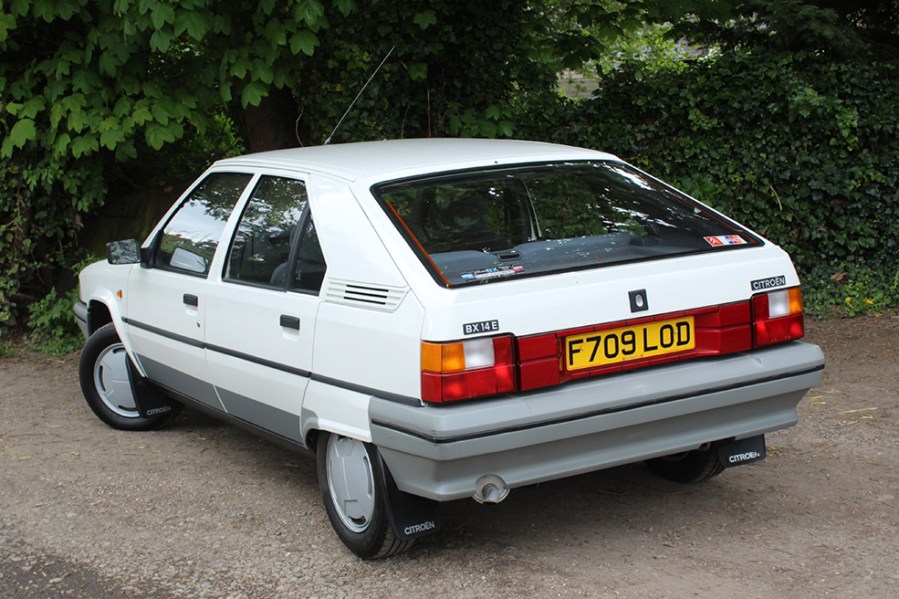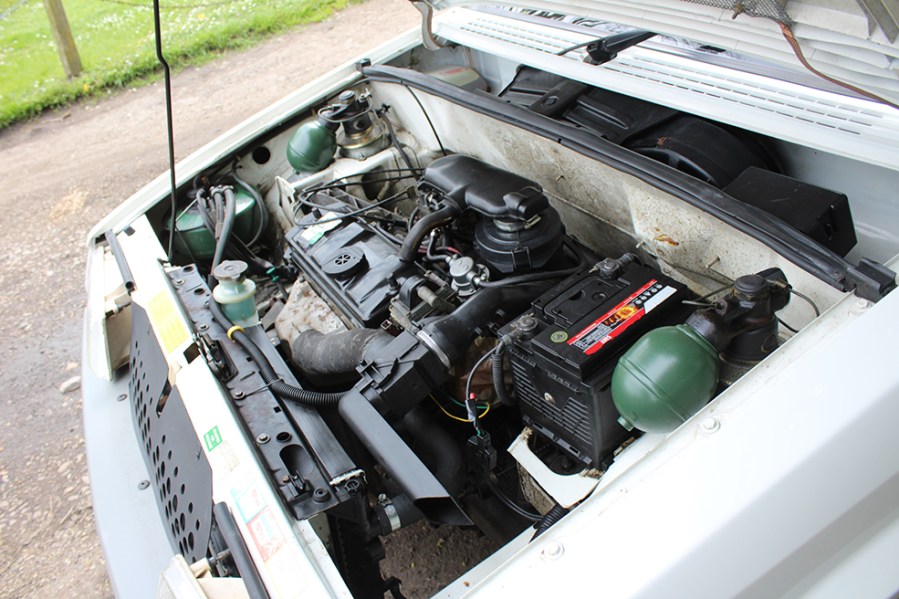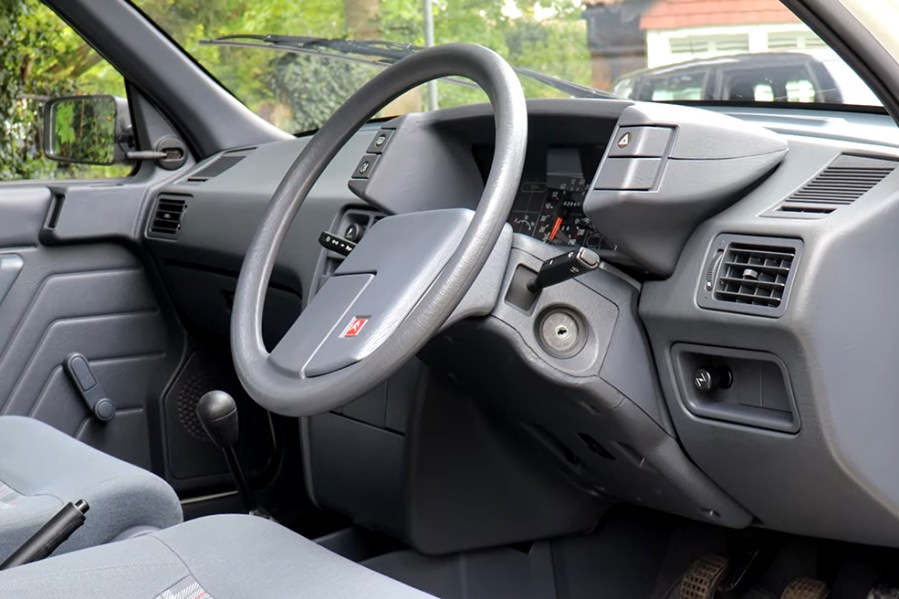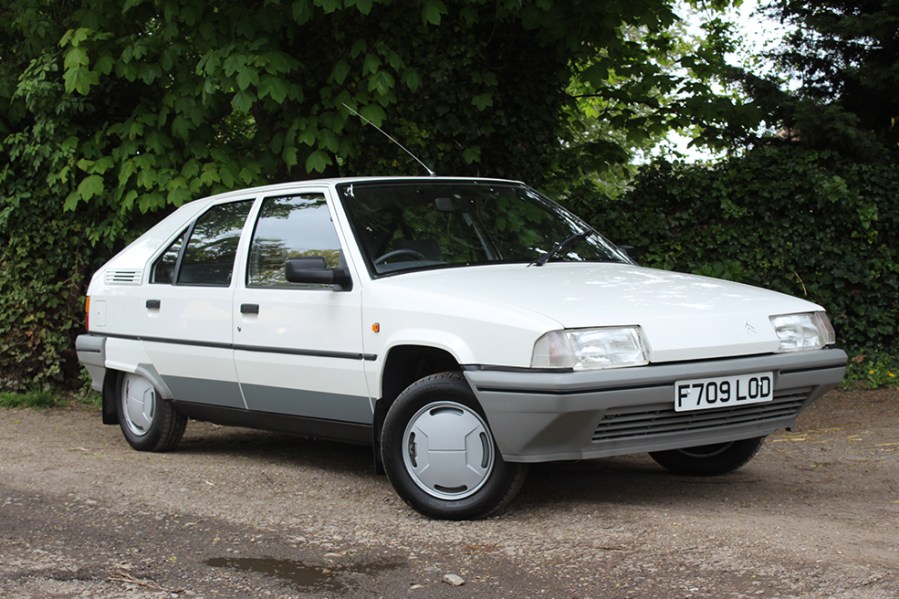We sample an immaculate example of the Citroën BX to explore why it was such an important car in its maker’s history
Words and images: Jack Grover With thanks to: Chevronics
The BX was a landmark in Citroën history for many reasons. Most significantly, it was the first Citroën to be fully developed under Peugeot ownership and reflected the parent company’s future vision for the marque. The BX, built on the platform that would later underpin the Peugeot 405, and using Peugeot drivetrains in place of the expensive and quirky air-cooled ‘boxer’ units of its GSA predecessor, certainly looked the part.
The straight-edged, angular styling came courtesy of the Bertone studio and had appeared on various concept cars before reaching production on the Citroën. The interior was similar adventurous – while the ‘fish eye’ rotating instruments and swooping plastics of the 1970s were gone, there were still single-spoke steering wheels and ergonomic design with the switches grouped into ‘satellite’ pods either side of the conventional instruments.
The result was a Citroën that was normal enough to be accessible to the mass market while still being different – and French – enough to have a distinct character and still excel where people expected a Citroën to. The BX was the first Citroën that wasn’t from the 2CV stable to be a genuine sales success in the UK. Majoring on low running and servicing costs, the BX was a surprising hit in the fleet sector. Versions powered by various versions of Peugeot’s XUD engine pioneered the acceptance of diesel power in the UK and for many years the BX was the country’s best-selling diesel car. Available as a five-door hatch or a capacious estate, the BX was an immensely practical and versatile car that in one bound put Citroën into the mainstream in the British car market.

The hardest of these features to write are the ones where the car is, for want of a better phrase, ‘box fresh’. It’s always great to come across a car that has been so well preserved that it offers a rare chance to effectively buy a brand new example of a favourite classic, but there are only so many ways you can describe that a car is, for all intents and purposes, perfect.
Bought new by an elderly lady in Cornwall, the BX spent most of the next 30 years in a garage (very much against the famous BX advertising slogan) and covered only 23,000 miles – very few of which were driven in the 21st century – before it passed into the hands of enthusiasts in the BX Club. It has previously graced the grass at The Festival of the Unexceptional. Now the odometer stands at 28,000 miles, confirmed by a thick history folder including all MoT certificates and the car’s original paperwork.
The BX’s immaculate condition isn’t entirely original, and does reflect some repairs by recent owners. When it left the original owner, the Citroën had badly scuffed bumpers on the passenger’s side front corner and scrapes and creases in both nearside doors. These have all been rectified to a good standard, and now the only blemish is a light scuff to the rear bumper corner on that side. In terms of the most important thing to consider with a BX, corrosion, there is none to be seen anywhere in an external survey, and both the paint and the grey exterior plastics reflect the low mileage and indoor storage. If you could repair the rear bumper, or find a replacement, this really is a car that could win concours competitions.

The same goes for the inside. As a 14E, this is the most basic BX you could buy in the UK by the late 1980s. It’s also a ‘Leader’ special edition, which in the grand tradition of 1980s special editions means that it has tartan cloth seats, some snazzier wheel trims than the standard 14E, and the dealer threw in a radio/cassette as standard. It didn’t even have any specific badges or stripes. Citroën interiors of the 1980s are not famed for their material quality or durability, but here everything is straight, true and clean.
The seats are free of any wear and tear and still have the sofa-like support and softness that Citroën was known for. The carpets are protected by aftermarket mats and are in excellent condition. There are no flapping bits of door trim, no broken door handles or window winders, no cracked dashboard sections and no wobbly column stalks. The original radio is still in place, behind its retractable cover (a feature common on 1980s French cars), and all the segments on the digital clock still work. The rear seats give every appearance of never being sat in, and the boot appears to never have been used.
The engine bay of a basic BX is pretty straightforward. Some light grime on the inner wings and bulkhead show that the car has been used, but it’s not enough to obscure the fact that they are entirely solid with unblemished paint. There are still plenty of bright anodised clips and fittings to be seen, as well as the numerous original stickers warning you which fluids to put and not put in various places.

Fragile features that often get lost over the decades, like the cardboard cold air intake trunk on the air cleaner, are still present. The ‘octopus’ of hydraulic hoses sprouting out of the LHM tank all look in great condition (no perished rubber or split plastic connectors) and the green suspension spheres have reassuringly recent dates on them. When running there is around a minute between the ‘ticks’ from the pressure regulator, indicating that the system is in generally healthy condition.
That means that the BX rises up smartly when started. The choke can be pushed in almost all the way as soon as the engine starts, but it does need one ‘click’ of choke kept on until warmed up to pull smoothly. Peugeot TU engines are pretty unburstable and an advantage of it being a carburettor car is that there are no issues with elderly fuel injection equipment. With fewer than 30,000 miles, this one runs sweetly.
A 1.4-litre (closer to 1.35-litre) engine in a large five-door family is never going to be a ball of fire, but the BX is famously light for its size, and with gearing well-matched to the engine’s power delivery it never feels laboured. The BX gets up to cruising speed at a decent clip and never seems out of its depth, be it on country roads or a fast dual carriageway. Hard acceleration will require good use of the gearbox, which is no chore since it’s Peugeot’s famously slick unit of the time.
A Citroën isn’t really about outright power or performance anyway – the point is to savour the famous ride quality. Citroën seemed to reach something of a peak with the BX, having perfected the hydropneumatic suspension system over the past 30 years but still being willing to make a car that majored on ride quality. The BX’s suspension completely absorbs even large bumps with only a slight upward motion of the body and a soft ‘thunk’. And it doesn’t float or wallow like one of its older, larger cousins.
While it has typically French amounts of wheel travel, the body control is excellent and it flows smoothly from corner to corner. On a faster, straighter road it is wonderfully relaxing, with excellent stability and minimal vibration. The BX sits at 70mph in an unruffled and refined way that would be totally alien to any other basic 1980s saloon with a small engine.
Citroën BX: our verdict
The BX ticks almost every box you could want for a modern classic. It is extremely of its time – the styling could not be any more ‘early 1980s’ and is unmistakeable. It is a once-common car that is now very rare. And, despite its Peugeot platform, engines and interior fittings, it is still very much a ‘proper’ Citroën, with its soft and springy hydropneumatics suspension, its sofa-like seats and its single-spoke steering wheel.
There’s something doubly charming about a very basic example, which gives it something of the character of a giant 2CV but with performance, refinement and comfort from a more recent era. Add to that the magnificent condition of this one and you have a perfect package.






